Donato Creti
| Donato Creti | |
|---|---|
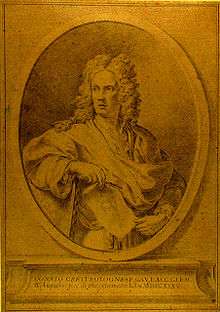 Self-portrait | |
| Born |
1671 Cremona |
| Died |
1749 Bologna |
| Nationality | Italian |
| Education | Lorenzo Pasinelli |
| Known for | Painting |
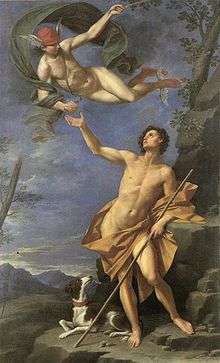
Donato Creti (24 February 1671 – 31 January 1749)[1] was an Italian painter of the Rococo period, active mostly in Bologna.
Born in Cremona, he moved to Bologna, where he was a pupil of Lorenzo Pasinelli. He is described by Wittkower as the "Bolognese Marco Benefial", in that his style was less decorative and edged into a more formal neoclassical style. It is an academicized grand style, that crystallizes into a manneristic neoclassicism, with crisp and frigid modeling of the figures. Among his followers were Aureliano Milani, Francesco Monti, and Ercole Graziani the Younger. Two other pupils were Domenico Maria Fratta and Giuseppe Peroni.[2]
Astronomical canvases
One memorable conceit in Creti's output is a series of small canvases depicting celestial bodies, disproportionately sized and illuminated, above nocturnal landscapes. The paintings, commissioned in 1711 by the Bolognese count Luigi Marsili and intended as a gift to Pope Clement XI, were meant to accentuate the need for the Papal States to sponsor an astronomical observatory. With the support of Clement XI, the first public astronomical observatory in Italy was opened in Bologna a short time later. The eight small canvases display the sun, moon, a comet, and the then-known five planets: Mercury, Venus, Mars, Jupiter, Saturn. His Jupiter depicts the Great Red Spot (first reported in 1665) and at least two moons .
Other works
- Cleopatra at Blanton Museum, Austin, Texas
- Alexander Threatened by his Father at the National Gallery of Art, Washington, D.C.
- Artemisia Drinking the Ashes of Mausolus at the National Gallery, London
- Achilles Handed over to Chiron at Palazzo d'Accursio, Bologna
- Education of Achilles at Palazzo d'Accursio, Bologna
- Mercury and Paris at Palazzo d'Accursio, Bologna
- Charity at Palazzo d'Accursio, Bologna
- Allegorical Tomb of Boyle, Locke, and Sydenham at Pinacoteca Nazionale di Bologna
- Allegorical Tomb of the Duke of Marlborough at Pinacoteca Nazionale di Bologna
- Landscape with Female Figures at Pinacoteca Nazionale di Bologna
- Visitation of the Virgin to Saint Elizabeth at Pinacoteca Nazionale di Bologna
- Achilles Dipped in the Styx at Pinacoteca Nazionale di Bologna
Gallery
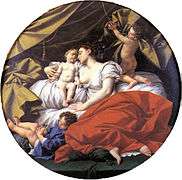 Charity
Charity Allegorical Tomb of Josepha Addison
Allegorical Tomb of Josepha Addison Cumaen Sybil
Cumaen Sybil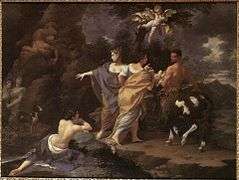 Achilles and Chiron
Achilles and Chiron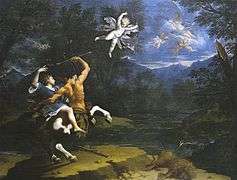 "The Education of Achilles by Chiron"1714
"The Education of Achilles by Chiron"1714
See also
References
- ↑ http://www.idref.fr/159034736
- ↑ Hobbes, James R. (1849). Picture collector's manual adapted to the professional man, and the amateur. T&W Boone, 29 Bond Street; Digitized by Googlebooks. p. 68.
- Wittkower, Rudolf (1993). Pelican History of Art, ed. Art and Architecture Italy, 1600-1750. 1980. Penguin Books Ltd. pp. 471–2.
- Catholic Encyclopedia article
External links
- Gallery including images of the astronomical canvases
| Wikimedia Commons has media related to Donato Creti. |